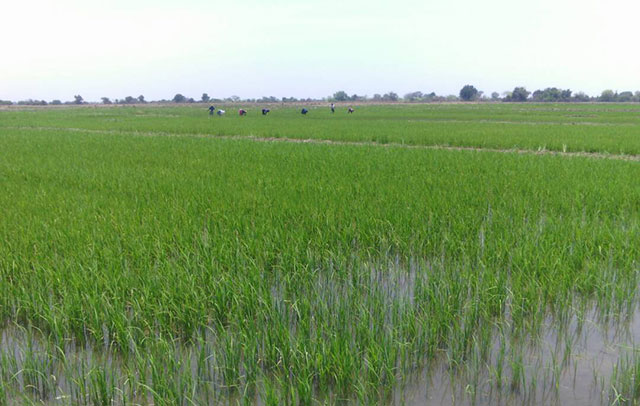MORE than 110 metric tonnes of medium grain rice harvested last year is still in silos at the Kalimbeza rice project in the Zambezi region.
The foreman at the project, Deon Simataa, said the rice is still in the silos because there is no market for it.
Declared a national project by former President Hifikepunye Pohamba in 2009, the rice initiative was meant to enhance food security and reduce poverty in the country.
Since the inception of the project, it has significantly increased its production from 70 metric tonnes to 259 metric tonnes of grain a year.
Simataa said in 2016, about 133 hectares yielded approximately 259 metric tonnes for both long grain and medium grain rice varieties.
“The rice is in demand among the local communities, but we want to take our brand to other regions but competition from imports is limiting us.
“Therefore we need the Agro-Marketing and Trade Agency (Amta) to intervene and help us to minimise the competition,” he noted.
Simataa further said the rice is only available at Katima Mulilo, Ongwediva and in Windhoek they are in the process of harvesting 155 hectares put under production this year.
Amta market promotion and advisory manager, Gilbert Mulonda, told The Namibian yesterday that there is not much they can do as the Kalimbeza project is not providing enough rice to sustain the local market.
“The type of promotion we do is in regards to compliance and the Kalimbeza rice is not a controlled product yet. Therefore, under the law, anybody can import rice from anywhere without restriction. “In the past, we marketed the Kalimbeza rice under the developing promotional materials, so that when people went through the supermarket shelves, they would see that Namibia also produced rice.
“However, we have since stopped that because even though the Kalimbeza rice project was launched on a commercial basis, there is not enough to cater for the local market,” he explained, adding that currently, they are only focusing on fresh produce and grain, especially white maize.
Stay informed with The Namibian – your source for credible journalism. Get in-depth reporting and opinions for
only N$85 a month. Invest in journalism, invest in democracy –
Subscribe Now!










